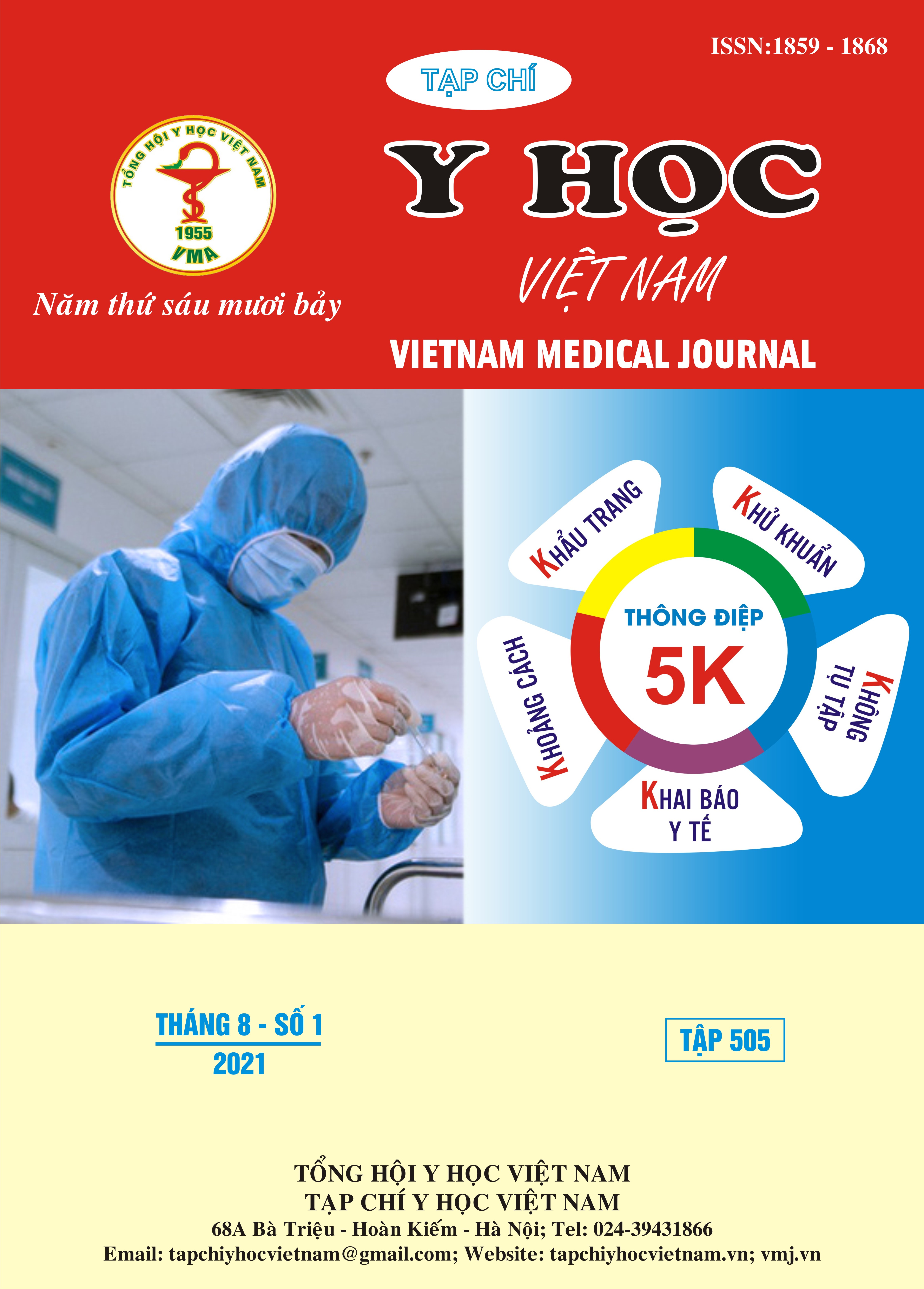EVALUATION OF THE EFFECTS OF NANO ALGINATE/CHITOSAN/LOVASTATIN TO METABOLIC LIPID DISORDERS IN OBESITY RAT MODEL
Main Article Content
Abstract
Objectives: Evaluate of the effect of improving lipid metabolism disorders of Alginate/Chitosan/Lovastatin nano in obese white rats by high-fat diet. Subjects and methods: The 72 white male rats were divided into two groups of normal diet (n = 36) and high-fat diet group (n = 36). After the 7-week of obesity model, these rats were randomly divided into 6 groups including 1) nomal diet-salt water (C-NaCl) group, 2) nomal diet-lovastatin dose group 4 mg/kg (C-Lovastatin), 3) nomal diet- Alginate/Chitosan//Lovastatin nanocomposite 4 mg/kg (C-Nano/Lovastatin); 4) high-fat diet-salt water (B-NaCl), 5) high-fat diet-lovastatin dose of 4 mg/kg (B-Lovastatin) and 6) high-fat diet-Alginate/Chitosan/Lovastatin nano combination at dose 4 mg/kg (B-Nano/Lovastatin). The intervention period is 12 weeks. Weight measurement, examination of triglyceride and blood cholesterol levels every 3 weeks, HDL -C and LDL – C before and after 12 weeks of intervention. Results: About the concentration of blood lipid components: The groups of rats with the normal diet did not have any difference in the concentration of blood lipid components. Meanwhile, groups of rats on a high-fat diet (B - NaCl, B-Lovastatin and B-Nano/Lovastatin) had different concentrations of triglycerides and blood cholesterol (p < 0.05), in which group B-Nano/ Lovastatin reduced the concentration of Triglyceride, Cholesterol from the end of week 6 to the end of week 12 more than the B-NaCl group (p < 0.05), the B-Lovastatin group reduced the concentration of Triglyceride, Cholesterol more than from the end of week 9 compared with the B-NaCl group (p < 0.05), there was no difference between the B-Nano/ Lovastatin group and B-Lovastatin with (p > 0.05); There was no difference in plasma HDL-C and LDL-C concentrations (p > 0.05). About body weight: In the normal diet, there was usually no difference between the groups. In the high-fat diet, the B-NaCl group tended to gain weight fastest, the B-Lovastatin group and the slowlest increase was the B-Nano/Lovastatin group, but there was no difference (p > 0.05). Conclusion: This study results showed that the alginate/chitosan/lovastatin increases the effect of Lovastatin in the treatment of dyslipidemia in the animals model.
Article Details
Keywords
High-fat diet, lipid disorders, rat, alginate, chitosan, lovastatin
References
2. Bradford R.H., Shear C.L., Chremos A.N., et al. (1991). Expanded Clinical Evaluation of Lovastatin (EXCEL) study results. I. Efficacy in modifying plasma lipoproteins and adverse event profile in 8245 patients with moderate hypercholesterolemia. Archives of Internal Medicine, 151:43–49.
3. Daniel I Swerdlow, David Preiss, Karoline B Kuchenbaecke, et al. (2015). HMG-coenzyme A reductase inhibition, type 2 diabetes, and bodyweight: evidence from genetic analysis and randomised trials. Lancet, 385(9965): 351 – 361.
4. Hernáez Á., Soria-Florido M.T., Schröder H., et al. (2019). Role of HDL function and LDL atherogenicity on cardiovascular risk: A comprehensive examination. PLoS One, 14(6):e0218533.
5. Krukemyer J.J., Talbert R.L. (1987). Lovastatin: A new cholesterol-lowering agent. Pharmacotherapy 7:198–210.
6. World Health Organisation. Obesity and overweight. 1 April 2020; Accessed on August 5, 2020.
7. Wilczewska A.Z., Niemirowicz K., Markiewicz K.H., et al. (2012). Nanoparticles as drug delivery systems. Pharmacological reports: PR, 64(5):1020–1037.


